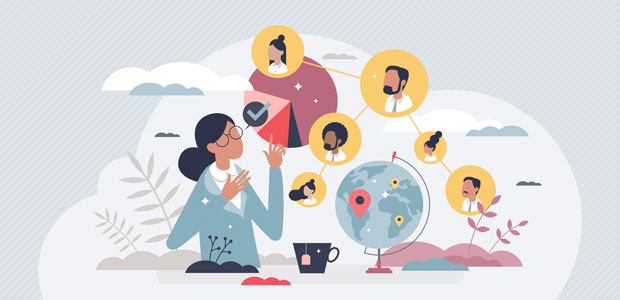
Harnessing Cognitive Diversity
People who don't think like you help you make better decisions.
Diversity is multi-layered
There has now been at least 20 years of research to tell us that having people from different backgrounds and perspectives leads to better decisions and better performance. We even have pretty specific data; the tipping point for better firm performance is when three or more female directors are appointed. Or that companies in the top quartile for racial and ethnic diversity are 35% more likely to have financial returns above their respective national industry medians (McKinsey 2015).
However, what about the diversity that you can't see?
There are fundamental aspects of diversity which aren't so visually obvious and therefore harder to easily identify. What about background diversity?
There are definitely well-trodden paths to the boardroom. It seems you need to have the right ‘cultural fit’ for the board room and blue-chip senior management credentials. Perhaps this is why the people who jump through all the right hoops are usually on multiple boards? It is not the most inclusive criteria and the optimal set of people to challenge the management of a company.
So let's unpick ‘cultural fit’, so other than gender, racial or ethnic homogeneity, we are talking education/class/background. A recent article in Harvard Business Review highlights a multitude of positive aspects to promoting people from lower socio-economic groups to more senior positions (better leadership qualities, more advocacy amongst the work force etc.)
And finally, what about cognitive diversity?
This is the actually the one that really matters in making the best decisions, because all other aspects feed into this one. All our brains have a pre-disposition to how they evaluate information on multiple dimensions which defines our individual thinking style. This style varies between people on multiple levels; one is faith in intuition versus need for statistical evidence. Another would be people who are driven to achieve versus people who are trying to prevent failure or loss. These differences affect the way we evaluate information.
What's more, scientific studies show that in a group, the more diverse the thinking styles and conflicting views, the more ideas we can generate and the best decisions are made when not everyone agrees. The reason being that people evaluate all avenues more critically.
However, collaborating with people who have conflicting views to you is conceptually hard and more stressful than the frictionless experience of working with people 'like you'. What’s more, in a start up environment too much debate can hinder the swift decision making required and focus to get to build and launch product with limited resources. However, our experience is that this often leads to siloed thinking.
That is the reason why we (The Vision) have developed a tool to evaluate thinking styles and a specific format to structure bize-size diverse thinking. We beam in a popup advisory board of diverse thinking experts to unlock complex problems or strategy formulation. Our experts bring broader insight and make it much more likely to produce ground-breaking opportunities and enhanced revenue growth.
As a start up ourselves, our learning has been that many start ups have a 'whaaat' moment in our Advisory board sessions because, you don’t know what you don’t know… It is the moment the founder realises there is a whole area/ perspective/ discipline they have never considered or been aware of! But the reality in our fast changing world is that it’s very hard to keep track of all developments in every field that may be relevant to your business.
This is why NASA Innovation lab sets up open innovation challenges to help solve complex problems. They discovered that over 70% of their challenges were solved better by people outside their industry.
So the question is, like NASA, how do you stay open to new ways of doing things, challenge your assumptions, but also filter out those that aren’t important?

